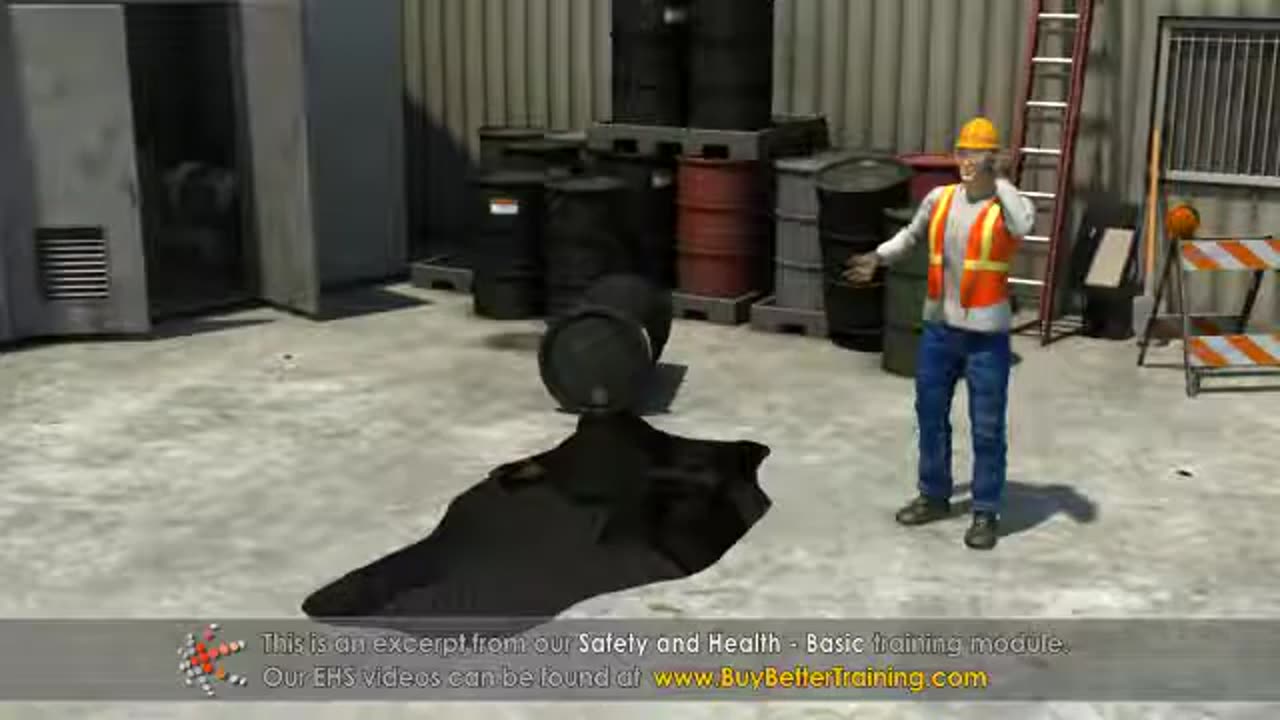Premium Only Content

Safety and Health - Basic Training
### **Safety and Health - Basic Training Outline**
This foundational safety and health training program is designed to provide employees with essential knowledge and skills to create a safer work environment and promote well-being. Here's the complete outline:
---
### **1. Introduction to Safety and Health**
- **Objective of training:**
- Foster a safety-first culture.
- Reduce workplace hazards and risks.
- **Importance of workplace safety and health:**
- Protect employees from injury or illness.
- Increase productivity and morale.
- Comply with legal regulations and standards.
---
### **2. Understanding Workplace Hazards**
- **Types of hazards:**
- **Physical hazards:** Slips, trips, falls, noise, heat, and moving objects.
- **Chemical hazards:** Exposure to harmful substances like cleaning agents, solvents, or fumes.
- **Biological hazards:** Viruses, bacteria, mold, and other pathogens.
- **Ergonomic hazards:** Repetitive motion, poor workstation design, and lifting injuries.
- **Psychosocial hazards:** Stress, workplace harassment, and violence.
- **How to identify and report hazards.**
---
### **3. Personal Protective Equipment (PPE)**
- Overview of PPE and its importance.
- Types of PPE:
- Head protection (hard hats).
- Eye and face protection (safety glasses, face shields).
- Hand and foot protection (gloves, steel-toed boots).
- Respiratory protection (masks, respirators).
- Body protection (high-visibility vests, aprons).
- How to inspect, use, and maintain PPE.
---
### **4. Emergency Preparedness**
- **Emergency types:**
- Fires, chemical spills, medical emergencies, and natural disasters.
- **Emergency response procedures:**
- Evacuation plans and assembly points.
- Fire extinguisher use (PASS method: Pull, Aim, Squeeze, Sweep).
- First aid basics (bleeding control, CPR, treating burns).
- **Communication during emergencies:** Whom to contact and how.
---
### **5. Workplace Safety Practices**
- **Good housekeeping:** Keep work areas clean and free of obstructions.
- **Proper lifting techniques:**
- Bend at the knees, not the back.
- Use mechanical aids whenever possible.
- **Safe tool and equipment use:**
- Inspect tools regularly.
- Follow manufacturer guidelines.
- **Avoiding distractions:** Focus on tasks to reduce accidents.
---
### **6. Fire Safety**
- Understanding fire hazards (flammable materials, electrical faults).
- Fire prevention strategies:
- Safe handling and storage of flammable substances.
- Regular maintenance of fire alarms and equipment.
- Fire evacuation procedures:
- Know escape routes.
- Practice fire drills.
---
### **7. Hazard Communication**
- Overview of the **Globally Harmonized System (GHS)** for labeling chemicals.
- Reading and understanding **Safety Data Sheets (SDS):**
- Chemical properties, hazards, safe handling, and emergency measures.
- Proper labeling of hazardous substances.
---
### **8. Health and Wellness at Work**
- Importance of physical and mental health:
- Staying hydrated and eating well.
- Getting adequate rest and exercise.
- Stress management tips:
- Recognizing signs of stress.
- Practicing mindfulness or relaxation techniques.
- Promoting a positive work-life balance.
---
### **9. Reporting Incidents and Near Misses**
- Importance of reporting:
- Helps identify and eliminate hazards.
- Prevents future incidents.
- Proper documentation:
- Steps to report injuries, illnesses, or unsafe conditions.
---
### **10. Rights and Responsibilities**
- **Employee responsibilities:**
- Follow safety policies and procedures.
- Use PPE as required.
- Report hazards and unsafe conditions.
- **Employer responsibilities:**
- Provide a safe working environment.
- Offer necessary training and equipment.
- Address reported hazards promptly.
---
### **11. Case Studies and Group Activities**
- Discuss real-life incidents and their causes.
- Group activity: Identify hazards in a simulated workplace.
---
### **12. Assessment and Certification**
- Conduct a short quiz or assessment.
- Provide feedback and issue certificates upon successful completion.
---
Would you like this training tailored to a specific industry or audience? Let me know!
-

Geeks + Gamers
2 hours agoDisney RATIO'D on Christmas Day | Mufasa Embarrassed By Sonic 3
13.8K1 -
 LIVE
LIVE
Sm0k3m
6 hours agoPlaying games on Rumble
250 watching -
 10:37
10:37
Russell Brand
2 days agoHow is this even allowed?
113K691 -
 1:37:26
1:37:26
Real Coffee With Scott Adams
2 hours agoEpisode 2701 CWSA 12/26/24
40.2K21 -
 2:58:58
2:58:58
Wendy Bell Radio
7 hours ago9 Steps Ahead
80K105 -
 LIVE
LIVE
LFA TV
16 hours agoTIME FOR A NEW SPEAKER! | LIVE FROM AMERICA 12.26.24 11am EST
5,311 watching -
 1:40:22
1:40:22
Game On!
13 hours ago $4.43 earnedNFL Thursday Night Football Seahawks at Bears EXPERT Picks!
33.3K9 -
 1:50:54
1:50:54
xBuRnTx
2 hours agoWho's Ready for New Years!
23.5K1 -
 12:09
12:09
Tactical Advisor
15 hours agoSmith & Wesson Shield Plus Carry Comp
19.3K1 -
 4:35:25
4:35:25
Father Russell
8 hours agoDelta Force | Not A Woman? | Mad Martigan Time
60.9K5